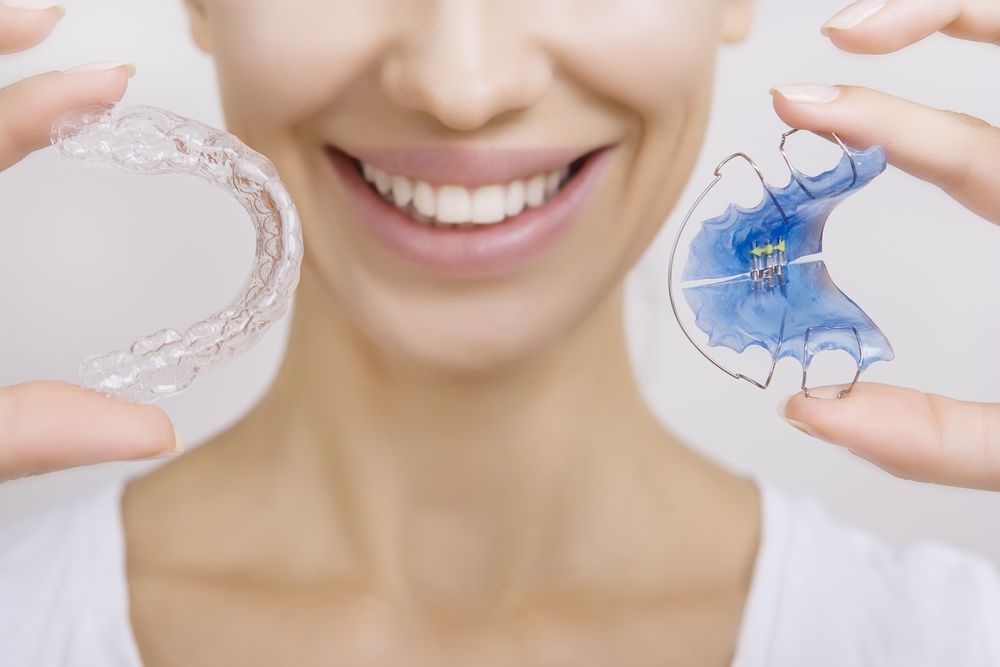Orthodontic Appliances Your Child Might Need

As orthodontic technology has improved throughout the years, so have the different appliances that are used to treat children with braces. Depending on their jaw and bone structure, your child may need an orthodontic device to help guide their teeth and jaw into proper alignment. These orthodontic appliances are used to maintain space in the mouth and allow for proper tooth eruption and movement. Find out what types of appliances are available and which is best for your child’s needs through these tips!
Benefits of Child Orthodontics
Many, if not most, dental patients will receive some form of orthodontic treatment during their lifetime. Even if one’s teeth doesn’t show any kind of orthodontic issues, it is advantageous that patients, especially children, visit with an orthodontist to maintain good oral health. The American Association of Orthodontics recommends that children have their first orthodontic visit between the ages of 7 and 8 to prevent the progression of any orthodontic issues that may already be developing. Orthodontic treatment can lead to healthy, beautiful smiles at any age, but is most beneficial when completed at an earlier age. Some benefits of visiting the orthodontist early on include observing the progress of incoming teeth, reducing the risk of impacted teeth, and monitoring facial and jaw development. Early orthodontic evaluations can discover hidden dental issues and decrease the risk for permanent teeth extractions, as well. Early detection of any dental issue is vital in maintaining good oral health for patients of all ages, and should be a goal that all children should obtain from an early age.
Types of Appliances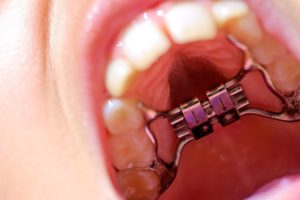
Whenever patients think of “orthodontia,” they typically think of braces. For young patients, braces are common orthodontic appliances that they can receive to straighten their teeth and correct any dental issues. Child orthodontics includes other appliances than just braces, though, and these appliances fulfill an important function in your child’s overall treatment. Orthodontic appliances change the way your child’s mouth works by correcting certain bone problems. Headgear, for example, guides the jaw into the proper direction by holding the upper jaw until the lower jaw can catch up with it. Retainers are other useful tools that keep teeth in the correct position after braces are removed, and most children will use some type of retainer during or after their treatment.
There are other orthodontic appliances that aren’t as well known but are used quite often in child orthodontics. The Nance “Button” is one of those appliances that uses a holding arch to maintain space in the mouth for children who have lost their baby teeth and are waiting for permanent teeth to grow in. If baby teeth are lost prematurely, the first molars might move forward into an incorrect position as they erupt because there is nothing holding them back. The Nance is an acrylic plate (the button) that covers a section of the palate with two metal bands around the back teeth to hold them into position until permanent teeth develop. This process helps maintain the proper space for permanent teeth to grow into. Another less-known appliance is the lower lingual holding arch, which does the same thing as the Nance but for the lower teeth. Two metal bands are cemented to the lower molars, joined by a U-shaped bar that rests behind the lower teeth. This keeps the back teeth from moving forward and maintains the space needed for future permanent teeth to erupt. Lastly, twin blocks are used to correct misalignments in the jaw that cause your child’s top teeth to stick out in front of the lower teeth further than normal. The blocks consist of two plates, one on the upper teeth and the other on the lower. These work together to bring your child’s lower jaw forward into the correct position, but is most successful when inserted while your child’s bones are still growing. They are the fastest-working appliances, and create quick results. Any of these appliances can be used in your child’s orthodontic treatment, so if you have questions about how they function or which one would be best to implement, make sure to ask your orthodontist.
What To Expect At The First Appointment
Most adult teeth erupt between the ages of 6 and 12, so whenever your child’s first permanent molars begin developing, the dentist will need to evaluate them to see how they work together. This process is called a “bite check,” and it helps orthodontists determine in what stage your child’s teeth are and what their treatment will require. The dentist will then decide which type of appliance would work best for your child and what instructions they will need to follow to get the best results out of their treatment. When using an orthodontic appliance, good oral hygiene will be necessary to prevent plaque buildup and other dental complications that could extend your child’s treatment time. Having your child brush and floss their teeth every day, along with cleaning whichever orthodontic appliance they’re given, will ensure that they get the healthiest and fastest treatment possible.
If your child is due for an orthodontic visit, or if they’re experiencing any of the orthodontic issues that we’ve discussed, call Belmar Orthodontics at (303) 225-9016 for a consultation to improve their oral health. Our dedicated team is ready to help you create a plan for your child to get them the smile that they deserve!
Does Your Child Really Need Braces?

We typically get our braces put on during our teenage to adult years, but how do you know whether your young child should have braces or not? Child orthodontics is a common practice for those children struggling with crooked, overlapping, or overcrowded teeth, or a misaligned jaw. There are many advantages for children as they receive braces earlier on in life as it can prevent future orthodontic treatment and guide incoming teeth into the proper position. Learn how to recognize whether your child needs braces through these tips!
When To Start
Young kids go through a lot of physical changes during adolescence, and some of those changes include jaw and teeth development. Orthodontics has become more and more common in young children to adjust certain orthodontic issues that occasionally occur as a child develops. Traditionally, orthodontic treatment begins once a child has lost most of their baby (primary) teeth and a majority of their permanent teeth have grown in, which typically occurs between the ages of 8 and 14. Even though braces is recommended at this age, it is a good idea to get an orthodontic evaluation for your child by the time they turn 7 years old; at this age, an orthodontist is able to detect early symptoms of orthodontic problems, such as an underbite or crossbite, which can cause severe complications and more treatment later on if left untreated at an early age. Bones are still growing during this age, so it is an ideal time to meet with an orthodontist to monitor bone and jaw development while evaluating any apparent orthodontic issues.
Advantages of Child Orthodontics
Although child orthodontics is only necessary if there are physical developmental issues within the mouth, receiving orthodontic treatment as a child has certain advantages. Visiting an orthodontist at an early age allows for observation of incoming teeth and reduces the risk of impacted teeth as your child loses their baby teeth and their permanent teeth take their place. As the orthodontist monitors your child’s teeth, they can help guide their teeth into the correct position as soon as they begin erupting, usually through braces or other orthodontic devices that help move teeth into the correct positions. Regular orthodontic visits also decrease the risk of hidden dental issues and permanent tooth extractions, as it allows for the orthodontist to adjust the jaw so that teeth crowding doesn’t occur.
Child orthodontics doesn’t always imply braces. Since a child’s jaw and teeth are still growing, many orthodontic issues, such as crowding, can be addressed before complications occur later on during adolescence. In this case, orthodontic treatment in young children is known as interceptive orthodontics. Many times, a child’s dental arch may be too small to fit all of their teeth. Just a few decades ago, it was a common practice to simply remove some permanent teeth to make space in the mouth. Now, though, child orthodontics can avoid this through the use of a palatal expander that expands the child’s upper dental arch, which allows adult teeth to emerge in a better position. Interceptive orthodontics can speed up the process of aligning teeth into the proper position and cause future treatment to be shorter and less involved.
How Much Does It Cost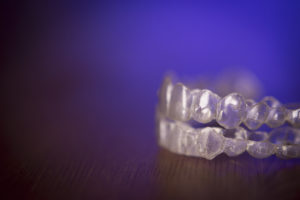
If braces are fit too early on a child, treatment can take longer and be more expensive. For this reason, it’s important to have regular orthodontic visits to monitor tooth and jaw development to ensure that whenever your child receives braces, it’s at the correct time. The braces that your orthodontist recommends will depend on your child’s type of problem that he or she has. There are three types of braces that most children will receive, and they each have different advantages and disadvantages:
- Traditional metal braces – Have steel ties holding the wires between the brackets in place. Cost is driven by what your orthodontist will charge for treatment, including multiple office visits.
- Damon braces – Do not have steel ties, but the brackets themselves hold the wires in place. Typically more expensive and can cost up to $8,000, but you pay for less dental appointments since the braces are self-ligating.
- Invisalign (or other clear or removable aligners) – Fit over the child’s teeth similar to a mouthguard. Your child will receive a number of aligners during the duration of their treatment, so cost is determined by the amount of aligners needed to achieve correction.
Just like adult orthodontics, child orthodontics can cost anywhere between $3,000 and $8,000, depending on what level of correction your child needs. If your child needs to have teeth extracted or be fitted for other appliances, the cost will most likely go up, as well. The way your child complies to orthodontic treatment will also affect the cost. Make sure that they are brushing and flossing everyday so as to avoid tooth decay, which will increase the cost of treatment as your dentist will have to treat around the braces to fix the decay.
Is It Necessary?
As mentioned before, whether your child needs braces or not at an earlier age is dependent upon their mouth structure and how their teeth form. For more information about child orthodontics or if you’re interested in scheduling a consultation, contact Belmar Orthodontics at (303) 225-9016!. Our experienced and highly trained orthodontic staff offers a variety of orthodontic treatments and technology so that you can be confident your children are receiving the best care available.
Why You Should Wear Your Retainer
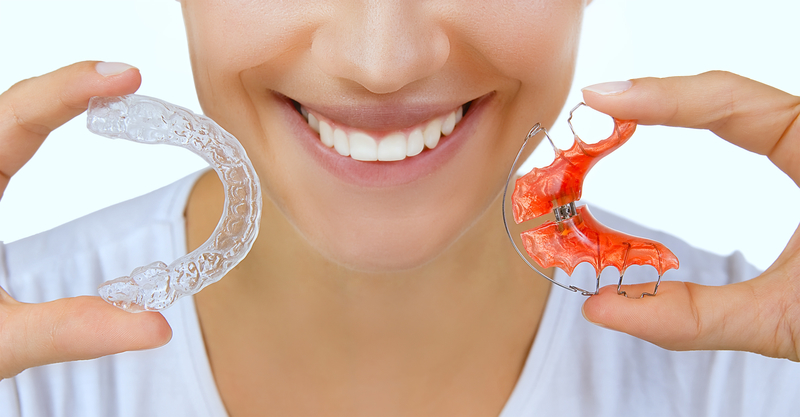
After you have your braces removed, most patients receive a retainer that they wear at night to keep their teeth from moving. But what kind of retainer should you have, and how long should you wear it? Retainers maintain oral health after braces by keeping your teeth in the correct alignment. Many people fail to use their retainers properly, and have to be fitted for braces again. Learn how to prevent your teeth from moving after braces and how to keep your teeth straight!
Purpose of Retainers
After you complete your time with braces, it will be necessary for you to consistently wear the retainer that your orthodontist advises you to wear. A retainer is an apparatus made of plastic and metal that is custom-made for each patient’s teeth and mouth. No two retainers are alike, but they all serve the same function as they seek to keep our teeth aligned properly after our braces are removed. Most people have to wear a retainer after they get their braces off, but many times people wear retainers to close gaps in their teeth, help with a speech impediment, or address specific medical issues. Retainers are especially important after your braces are removed, though, because our teeth will attempt to return to their original position after treatment. Another type of tooth movement that we want to avoid is natural physiological drift, which happens as the width of our smiles gets narrower as we age and our teeth begin to crowd. This occurs to everyone, but consistently using a retainer can prevent this shift in our teeth.
Getting your braces removed is definitely an exciting moment, but keeping your teeth straight is a lifetime effort. Our newly-aligned teeth need time to settle into our soft tissue and jawbone, and wearing your retainer helps this process be successful. Wearing your retainer at night and in between meals allows your teeth to hold their new form and prevents them from shifting back into their old position. As our bodies grow, our teeth follow suit, and retainers maintain the new tooth position that your braces achieved during your treatment. At the beginning, it may be necessary to wear your retainer all day for a few months, or you may only have to wear it at night a few times a week. Your orthodontist will advise you on how long and how often you should wear your retainer, and it is important that you follow all recommendations that you are given.
Types of Retainers
There are two main types of retainers that are used: removable and fixed. Removable retainers can be removed whenever you eat and brush your teeth, but typically must be worn full-time for at least one year after you get your braces removed. Hawley retainers are the most common type of removable retainer and is fit to your mouth shape with wires that wrap around your teeth. Invisible, or Essix, retainers are made of clear plastic that makes it look as if you’re not wearing anything, which increases its aesthetic appeal. Depending on the treatment plan you received during your time wearing braces, your orthodontist may recommend only wearing either of these two removable retainers at night. On the other hand, fixed retainers are those that are cemented to the backs of your teeth and kept in place for several years, even decades. This type of retainer is useful for those people who don’t want to worry about constantly removing their retainer or whose teeth have a higher likelihood of post-braces movement.
Caring For Your Retainer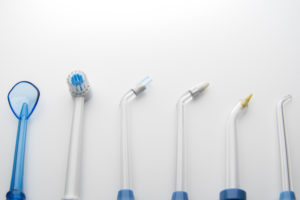
Depending on which type of retainer you use, there are certain instructions that are recommended to properly care for your retainer. For fixed retainers, regular dental checkups are essential to monitor for cavities and clean out any tartar or plaque. When flossing, make sure to use a floss threader that will allow you to go underneath the wire and clean between the teeth. As an additional measure, use a waterpik to rinse out food around the wire. Waterpiks should not replace normal flossing because floss physically removes bacteria from the teeth and gums while a waterpik merely rinses those areas. Although fixed retainers are incredibly strong, they can still break. Try to avoid biting hard foods, like carrots and nuts, with your front teeth to avoid any damage to your retainer. For a removable retainer, make sure to scrub it with soap and a toothbrush daily, or you can try soaking them in denture cleaning tablets or vinegar and water. Whenever you take out your removable retainer, make sure to keep it in a reliable case where it can be protected from pesky pets or avoid being accidentally thrown away. Don’t wear your retainer while playing sports, especially swimming, skiing, or contact sports, and make sure to avoid heat by keeping them away from hot water or hot car dashboards.
Tips For Maintaining Your Oral Health
Retainers play a vital role in keeping our teeth straight and preventing oral health problems, such as teeth crowding, but they aren’t the only recommendation for maintaining good oral health. Make sure to continue flossing and brushing your teeth daily, while visiting with your dentist every six months for a general checkup. For more information on the different types of retainers that are available and what would be the best fit for you, call Belmar Orthodontics at (303) 225-9016 to learn how to improve your smile and oral health!
A Straight Smile for Life with Retainers
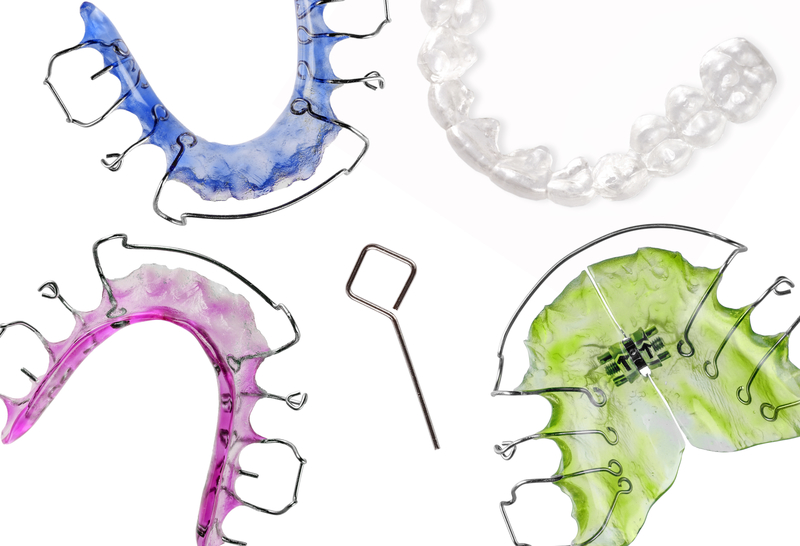
Most patients spend 18-24 months with their orthodontic appliances. That’s about 78-104 weeks of your life with braces, and time that you don’t want to have wasted. The worst thing that can happen after getting your braces off is that your teeth go crooked once more. This can happen within the first month if you’re not careful. Luckily, dentists know this and we provide our patients with either removable retainers or permanent ones. See why retainers are so important for maintaining a straight smile for life and why you need one!
Finishing Up with Braces
If you have gotten to the point in your orthodontic treatment that you need a retainer, congratulations! It has taken you 18-24 months to get that beautiful, straight smile you’ve wanted. No matter if you had lingual, ceramic, or metal braces, or if you opted for Invisalign treatment, you will still need an orthodontic appliance to keep your teeth straight. This isn’t something you want to wait on either, as studies show that your teeth start shifting back to their crooked state within the first month of getting braces off.
When our patients end their time with braces, we immediately prep them for either a removable or a permanent retainer. There are pros and cons to each of these types of retainers, but the bottom line is, you need one! A retainer is exactly what it sounds like; it “retains” your straight smile. When you wear it (usually at night), your smile won’t shift or become crooked. We take an impression of your teeth as soon as your braces come off, which we then send to our lab. You will have a retainer custom-made to fit your newly-straightened teeth that will keep them in that position for decades to come.

Retainers 101
You may need both a bottom retainer and a top one, or you might just need one. Some dentists only require a bottom retainer, as the bottom teeth tend to keep the top teeth in place. It all depends on the patient. As we mentioned, there are two types of retainers: removable and permanent.
- Removable – These are the classic retainer pieces that most people think of when they think “retainer”. When we make impressions of your teeth, we go back and use those impressions to make retainer pieces for your top and bottom jaw. Once they are done, you will come into the office and try out your new retainers. Wear them every day during the night and clean them when you take them out in the morning. Only use cleaning products that are safe for mouth retainers and never use hot water when cleaning.
- Permanent – This is also a “fixed” retainer because it is bonded to your teeth and set in place. Much like your braces (if you chose ceramic, lingual or traditional metal), we will bond metal parts to your teeth. However, these metal parts will be placed on the back of your teeth instead of the front. You can choose to have a metal bar that goes across the back teeth or you can choose small metal wires that will bond each individual tooth to the one next to it. If you choose the second, you will have the bottom 6 teeth connected, with bonding cement on each of the backs of those 6 teeth. However, the metal and bonding is small, so it won’t take up very much room in your mouth. You may not even notice it! Both the bar and series of small wires work to keep your bottom teeth in place, which will keep your top in place.
Which One Is Right for You?
Our patients can choose if they want to have a removable or permanent retainer. One might not be right for a patient depending on age and daily habits. If you often lose things (such as car keys or your phone), then you might want to choose a permanent retainer. These stay in place 100% of the time and because of that, you can never lose them. Plus, they retain your teeth around the clock, instead of only at night (like a removable retainer). Permanent retainers also aren’t visible like removable retainers are because they are attached behind your teeth.
A removable retainer will have visible bars that others will be able to see in your mouth when you show your teeth. This generally isn’t a problem, as most people wear theirs at night. If you already struggle with brushing and flossing your teeth, you might opt for a removable retainer, as flossing can be more difficult with a permanent retainer. However, both options are great for all our patients. You simply have to choose which one fits you best.

Healthy Life, Healthy Mouth
We would love every single one of our patients to have a straight smile many decades from now. If you wear your retainer like you should, or continually renew your permanent ones, you can count on keeping that straight smile. However, you also want to keep your smile healthy and free of disease throughout all those decades. After all, there is no point in striving for a straight smile if you don’t have any teeth!
No matter if you are 9 or 90, you have to keep up on proper oral hygiene practices if you want to have a healthy, beautiful smile. Brush and floss your teeth every single day, making sure to brush multiple times a day. Eat nutritious foods and cut down on the sugar to reduce your risk for tooth decay and gum disease. Also, clean your retainer every day so that it stays strong and durable for many years. If you need a new retainer, or are interested in a permanent retainer option, call Belmar Orthodontics today at (303) 225-9016!
Retaining a Straight Smile for Life

A straight smile is something that millions of people strive for. In fact, more than 4.5 million Americans wear braces each year to achieve that straighter smile. Not only are there aesthetic benefits of a more beautiful smile, but a straighter smile also helps you to avoid oral health issues. For children, we can correct bite and alignment problems that make biting, chewing, speaking, and breathing difficult. For adults, we can correct these issues as well as make the permanent teeth straight. This can be done through traditional metal braces, lingual braces, clear ceramic braces, and Invisalign transparent aligners. Once you have a straight smile though, you must take care of your oral health to keep that smile straight. We can help you to know the benefits of a straighter smile and how you can keep it straight throughout life!
Straightening Your Teeth
In ages past, straightening your teeth was much more difficult than it is today. Instead of only offering traditional metal braces, we give our patients several orthodontic options to get that straight smile they’ve always wanted. Traditional metal braces are still the economical and most popular option amongst patients. This is the tried and true method of achieving a straight smile, and is what most people think of when they picture braces. This design consists of metal brackets attached to the front and center of every tooth, where an archwire will go through each bracket. At each appointment, this wire is adjusted and the teeth get straighter and straighter.
Your Options
We also offer lingual braces, ceramic braces and invisalign treatment:
- Lingual Braces – Think of these braces as metal brackets attached to the inside of your teeth. They are generally more gold in appearance and instead of a bracket attached to each tooth, there is a custom-made metal piece attached to the inside of each tooth. There is a bracket and a wire just like with traditional metal braces, but the entire appliance is on the tongue-side of your teeth. This option is great for teens and adults who want a straight smile without people seeing their appliance.
- Clear Ceramic Braces – Made of ceramic material, these brackets and archwire actually help to decrease demineralization that can happen with braces. Ceramic material is naturally white, so we can blend your brackets (and even the archwire) into the color of your teeth. This is a great option to have the functionality of metal braces without them being very noticeable.
- Invisalign – This is a series of transparent aligners that have become increasingly popular over the last decade. We custom-make transparent aligners that you change out every 1-2 weeks. These aligners slowly move the teeth into a straight smile over time and take about the same amount of time to straighten as metal braces do. Teens and adults alike love Invisalign because you can straighten your teeth invisibly. You also have the freedom to remove the aligners to clean your teeth, eat, drink and play sports.
Retaining a Straight Smile
Over 4 million people wear braces each year. Those patients will typically spend between 18 and 24 months achieving a straight smile. However, all is not done once those braces come off. We provide every patient with a retainer after their braces come off. You need to commit to wearing your retainer to maintain a straight smile throughout life. We custom-make a retainer after taking an impression of your teeth once your braces come off. Wear this retainer around 16 hours each day. That means throughout the night and for part of the day. Remove them when you eat and make sure to clean your retainer thoroughly with warm water and hand soap only.
If you have a removable retainer, make sure to keep it in its secure case so that it is not damaged or warped in any way. If you don’t want to have to worry about wearing your retainer enough or if you lose your retainer easily, you should consider getting a permanent retainer. These types of retainers consist of metal wires that are attached to the inside of the front teeth. They can be attached on both the bottom and top teeth or just the bottom teeth. These types of retainers last for years and can maintain your straight smile for many years to come. Wearing your retainer is highly important for keeping a straight smile. Without it, your teeth can begin shifting within the first month of your braces coming off.
Keep Your Teeth Strong
A major part of keeping your teeth healthy and strong (if not the most important part) is to keep them healthy through proper oral hygiene. Many patients know that they should brush and floss their teeth to keep them healthy. Many patients also think that losing teeth with age is inevitable, but it’s not. There are many people that keep their teeth for their entire life because they take such good care of those pearly whites. The American Dental Association recommends brushing your teeth at least twice a day. This is a minimum recommendation, as brushing your teeth after every meal will reduce your chances for tooth decay and gum disease even more.
A straight, healthy smile can increase your confidence and self esteem. It can also make you appear more confident and successful, and can help you do better in school and land a better job. There are many incredible benefits that stem from a straight smile. We encourage you to invest in orthodontic care and to retain your straight smile after your braces come off. If you want additional tips for keeping your smile healthy and straight, call Belmar Orthodontics today at (303) 225-9016!
How A Retainer Can Benefit You
Why do you need orthodontic retainers? You’ve had your orthodontic treatment, so why do you need another device in your mouth? Orthodontic care is an investment–an investment in you and in a lifelong smile! You’ve taken the time (and money) to get a straight smile, now retain it! Retainers are the perfect way to keep your teeth healthy and straight for the rest of your life. We have various types of retainers for our patients—ones to simply keep your teeth straight and ones to combat bruxism and teeth grinding while also keeping your teeth in line. Once your brackets come off, your teeth can quickly change position that first year, especially in the first month. We provide removable retainers for you or a permanent retainer depending on your needs. At Belmar Orthodontics, we want to find the best retainer for you to keep your smile straight for years to come. Call us today to schedule your orthodontic appointment and learn how a retainer can benefit you.
Retaining That Beautiful Smile
Braces are an investment that can change your smile for the rest of your life. Straight smiles from orthodontic treatment have been proven to increase confidence and self-esteem. Studies show that a straighter smile makes a person appear more attractive, more successful, confident and even more trustworthy. Receiving all of those benefits comes from only about 12-24 months of orthodontic care and wearing braces. Not too bad for a lifetime of amazing benefits, right? But now that the braces are off, retainers keep that smile healthy and straight. Custom-made retainers fit your mouth to preserve your smile and avoid relapse.
Retainers are meant to keep the structure of your teeth for the rest of your life. The first month is absolutely critical when it comes to wearing your retainers. Teeth are more prone to move back to their crooked shape during this time. As you age, there is a phenomenon called “natural physiological drift” that will cause the width of our smiles to become narrower and the teeth to move. Wearing retainers will prevent this drift. You’ll be thanking yourself in the future.
Retainers for Additional Treatment
Many patients that receive dental care also might have common problems such as bruxism or TMJ. Bruxism is the clenching and grinding of the teeth at night. It affects around 10% of adults and 15% of children, so it’s actually quite common. We fit our patients for bruxism retainers that will provide a buffer between the teeth that grind together, keeping them strong and preventing wear and tear and tooth fractures. These retainers will also do double duty by keeping your teeth aligned.
TMJ stands for “temporomandibular joints” and has to do with the muscles that help you open and close your mouth. When the mouth doesn’t open and close properly, you will have jaw pain and more difficulty speaking swallowing and chewing. This is usually referred to as TMD, which is “temporomandibular disorder.” Basically, this means that the teeth either don’t line up together properly, causing malocclusion and bruxism as well (which we mentioned above). A TMJ retainer will help keep the jaw in line and keep you from feeling pain.
Making Retainers a Permanent Part of Your Life
Did you know that you can receive a permanent retainer? If you don’t want the hassle of having to put your retainer in every night, there are options for permanent retainers to be placed behind either or both of the upper and lower teeth. This is a great option for patients that misplace retainers easily or will forget to keep wearing the retainer often. Fixed retainers tend to be very strong, but they can also break, so you’ll have to avoid biting very hard things. At Belmar Orthodontics, we do offer the perk of covering any breakage that happens to a fixed retainer during the first year.
Retainers Are Small But Make a Big Difference
Retainers are amazing but simple appliances that can retain your smile for the rest of your life. You’ve invested 12-24 months of your time getting your teeth straight. The cost of braces doesn’t seem too bad if you consider that you can get decades of straightness from wearing a simple appliance at night. Always treat your retainer with care and wear it often (ideally every night) to keep your smile perfect and to prevent your mouth from becoming sore (from shifting teeth). If you would like a retainer or need to be fitted for one, call our Belmar Orthodontics office today at (303) 225-9016 today!
Permanent or Removable Retainers – How Do You Decide?
You have your beautiful smile, now you need to choose how to retain it–permanent or removable retainers or a combination of both? How do you decide? Don’t worry! Our Belmar Orthodontics team is very experienced at helping our patients choose which method of aftercare will work best for your needs. Patient education is very important to us. We will give you all the advantages and disadvantages of both methods and then you can decide. One thing is for sure, your beautiful new smile will be something you will want to retain–forever!
Yes, You Need a Retainer
Regardless of the type of orthodontic treatment you receive, following treatment it is necessary to wear a retainer in order to retain your smile. Newly aligned teeth want to return to their former position. They need time to adjust to their new position and into the soft tissue and jawbone that house them. During the first month after your braces are removed, your risk of movement is very high. Teeth can take up to a year to stabilize following treatment. If there were gaps between your teeth prior to orthodontic treatment, your adjustment period can be even longer. The last thing you want is for your teeth to shift after the dedication and expense you have invested in your orthodontic treatment.
How Long Will I Need to Wear a Retainer?
One of the most common questions we are asked from our patients following orthodontic treatment is how long will I need to wear my retainer. Our typical response is, that you need to wear a retainer for as long as you want your teeth to remain straight. Natural physiological drift happens to all of us as we get older which causes teeth movement. This movement is related to changes to the width of our smiles which narrow as we get older, causing our teeth to crowd. There are many factors that influence how long a patient needs to wear their retainers which we can discuss with you during your post-treatment consultation.
What Types of Retainers Do You Offer?
Belmar Orthodontics uses both fixed and removable types of retainers. We work with you to decide which option will fit your needs and lifestyle the best.
Removable Retainers
The two most common types of removable retainers are Hawley and Essix retainers. Both types of retainers are designed specifically to fit the patient’s mouth through dental molds that are taken following treatment. Hawley retainers are stainless steel retainers that are kept in place by a wire that wraps around your teeth and an acrylic arch that rests closely against the roof of your mouth. Essix retainers are an invisible option, made of clear plastic so that they can be worn without anyone noticing.
Fixed Retainers
Fixed retainers are just as the name describes. They are not removable, but bonded to the back of some of your teeth to prevent them from moving. The great thing about permanent retainers is that once they are bonded to your teeth you don’t have to worry about removing them, keeping track of them, or altering your diet. Since they are fixed to your teeth 100 percent of the time, you have less chance of your teeth moving back to the position they were in before. The other advantage is that they are affixed to the back of your teeth, invisible to those you interact with.
Things to Consider When Choosing a Type of Retainer
Both types of retainers, fixed and removable, have advantages and disadvantages. Fixed retainers can make flossing more challenging because of the wire obstruction. Floss threaders will be needed for effective cleaning. Food can get trapped more easily behind a fixed retainer so you need to be dedicated to thorough cleaning so that plaque doesn’t have a chance to build-up and cause decay. Being dedicated to making and keeping your scheduled dental cleanings will help you keep those teeth that are bonded to your retainer healthy. Removable retainers make oral hygiene habits a breeze. With the Essix system, you can still have that invisible look when you are wearing them. But, removable retainers are not for the forgetful! Removable retainers need to be removed before you eat, play sports and other activities which means they can get lost if you aren’t careful. Hawley retainers have a metal wire on the outside of your teeth that is visible to others, so if you aren’t wanting your retainer to be seen, it may not be the option for you.
A Combination Approach
Some patients opt for a fixed, bonded retainer behind the upper teeth and the lower teeth, but then also have removable retainers made to wear when they sleep. This is another option you can choose if you like certain aspects of each system. Again, counseling with Dr. Hardy about the method you are most comfortable with can help with the decision-making process. We will work with you to help you make a choice that is effective yet easy for you to use.
Schedule a Consultation to Learn More
The best way to find out how Belmar Orthodontics superior orthodontic technology can help you achieve your goals with your retainers is to schedule an appointment for an in-office consultation. Dr. Hardy can talk with you about your goals and come up with an effective treatment plan to help you achieve them. Contact our office today at 303.225.9016. We are excited to meet you and help you reach your smile goals!
